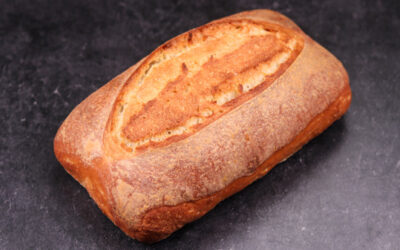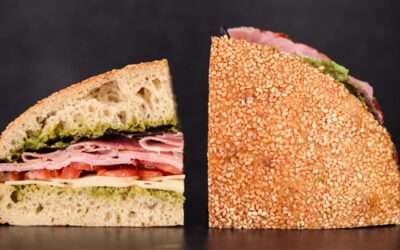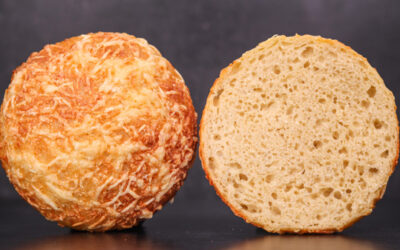The Belarusian rye bread I posted many moons ago was one of my favourite recipes ever. I grew up eating this kind of bread and if I had to choose only one, then this would be the bread I would happily eat for the rest of my life. It has a soft and bouncy texture. It packs an amazing flavour. It stays soft and fresh longer than other breads. And it compliments any savoury topping. But it is also amazing with just butter and a small pinch of sea salt.
A couple of ingredients and methods make this bread what it is. First is the fermented rye malt. It is widely used in European rye bread making. It is also used for making kvass (an Easter European drink). Without the rye malt this bread will not be the same. This stuff is not easy to source. I have only ever been able to order it off eBay from Belarus, Ukraine or Russia. It always takes weeks to arrive but it’s worth the wait.
The other ingredient (and method) is the addition of potatoes in the dough. Here is an in-depth video on that. And there is the scalding method. Both the potatoes and the scald give this bread its bouncy texture and extend its shelf life. More about scalding here.
Finally, the dough is cold fermented for maximum flavour.
This loaf will fit well in a 1.5lb (680g) – 2lb (900g) tin.
Ingredients
For the scald –
50g (1.75oz) whole rye or white rye flour
30g (1oz) fermented rye malt powder
50g (1.75oz) mashed plain potato
10g (0.35oz) caraway seeds
200g (7oz) boiling water
For the main dough –
250g (8.8oz) white bread flour
200g (7oz) whole rye or white rye flour
200g (7oz) cool water
10g (0.35oz) salt
30g (1oz) barley malt syrup or other sweet syrup
5g (0.17oz) instant dry yeast or 6g (0.21oz) active dry yeast or 15g (0.5oz) fresh yeast
If you are using active dry yeast, then you may need to let it sit in the water for 10 minutes before adding the other ingredients or else it could take a lot longer to raise the dough.
Method
1. Make the scald. In a large bowl combine the rye flour, malt powder, mashed potato, caraway seeds, and boiling water. Whisk until smooth.
2. Cover and leave to cool down for around 2 hours.
3. Make the dough. Add the water, yeast, salt, and malt syrup to the scald. Whisk until smooth. Add the white bread flour and mix again. Finally, add the rye flour and mix until smooth. If you are struggling with the scraper, then wet your hand and finish mixing by hand. *Desired dough temperature 24C – 25C (75F – 77F).
4. Cover and refrigerate for 30 minutes.
5. Fold.
6. Cover and cold ferment for 24 hours.
7. Before the final shaping pinch off 20g (0.7oz) of the dough and whisk it with 20g (0.7oz) water to make a paste for topping the loaf before baking. Cover and leave on the side.
8. Shape the loaf and place it in a greased baking tin.
9. Cover and proof for 1.5 – 2 hours. *During the final hour of proofing preheat the oven to 200C (392F) fan off.
10. Whisk the topping paste and apply it to the loaf. Poke some holes with a chopstick into the loaf (optional). This gives it that classic rye bread look and can prevent the loaf from tearing open in a random spot.
11. Bake for 55 minutes.
12. Remove the loaf from the tin a spray or brush it with water. Cover the whole bread in it. This will make the crust nice and soft, and it will make it shine.
13. Place the loaf back in the oven for 5 minutes.
14. Leave to cool down for at least 3 hours before cutting or the crumb will be gummy.
Enjoy your tasty bread!
Keep in mind that the conditions in each kitchen are different, so fermentation times may vary for you. It is up to the baker to control the bread and react accordingly.
Your oven may be different too, so your baking time may vary.
Watch the video here



